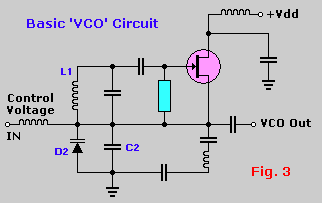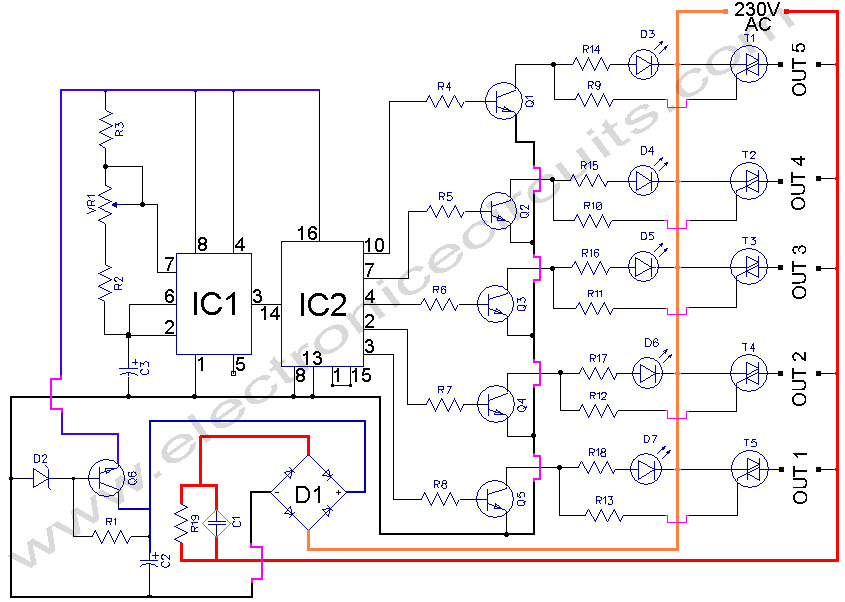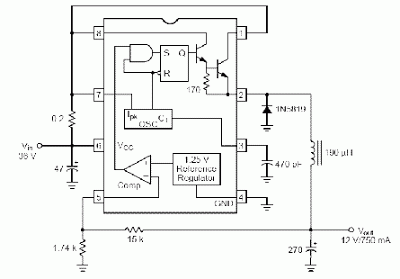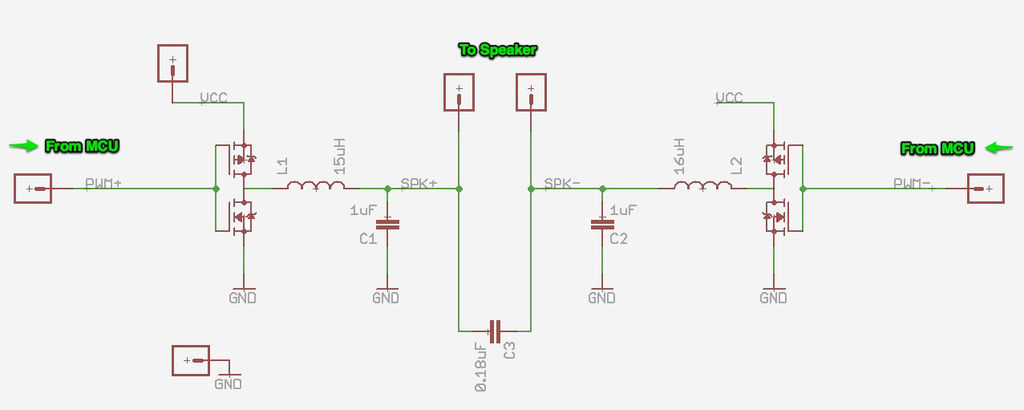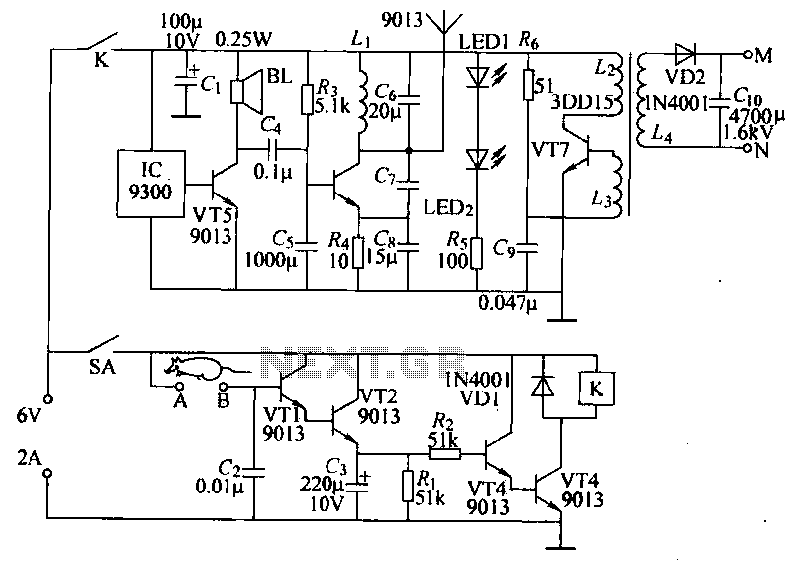
An external audio level display circuit
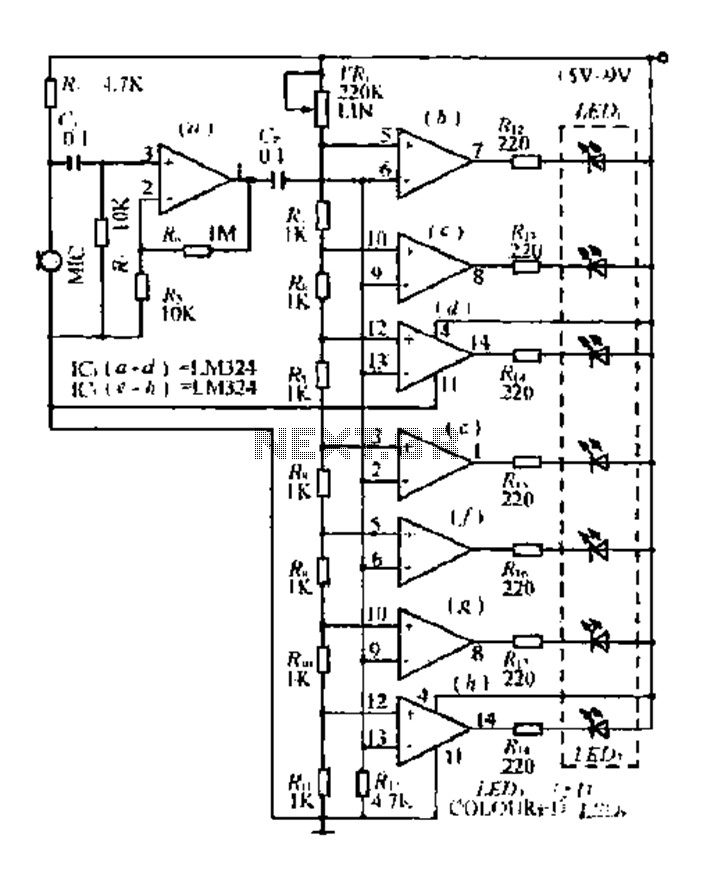
The condenser microphone pickup signal is processed by an integrated circuit (IC) where it is amplified and compared using a comparator circuit. The outputs from the comparators, designated as IC1, IC2, and IC3, provide voltage comparisons based on different detection levels. The output levels are indicated by a series of LEDs, LED1 through LED7, which visually represent the corresponding audio levels. A variable resistor (VR) and fixed resistors (Ru and Rs) are configured to create a resistor ladder, which allows for the adjustment of the reference voltage at the positive terminal of the comparator.
The circuit described utilizes a condenser microphone as the input device, which converts sound waves into an electrical signal. This signal is then amplified to ensure that it is suitable for further processing. The amplification stage is crucial, as it raises the signal to a level where it can be effectively compared against a predefined reference voltage.
The comparator circuit consists of multiple operational amplifiers configured to compare the amplified microphone signal against different threshold levels. Each comparator output corresponds to a specific audio level, enabling the detection of varying sound intensities. The outputs are connected to a series of light-emitting diodes (LEDs), which provide a visual representation of the detected audio levels. The arrangement of LEDs allows for a clear indication of the intensity of the input signal, with each LED illuminating at specific thresholds.
The resistor ladder formed by the variable resistor (VR) and fixed resistors (Ru and Rs) is an essential component of this design. This configuration allows for fine-tuning of the reference voltage used in the comparators, enabling adaptability to different audio environments or sensitivity requirements. By adjusting the variable resistor, the user can calibrate the circuit to respond appropriately to the desired sound levels, ensuring accurate detection and representation of audio signals.
Overall, this circuit design effectively combines audio signal processing, amplification, and visual output to create a versatile and user-friendly audio level detection system.Condenser microphone pickup signal broken by Iq. amplified and sent as a comparator HJ of lC.., - LC.., And lC: (e - b) each of the negative side, the positive terminal of the voltage comparison between wells. Output different detection levels, were light hair light: diode LEDl - LED7. The final show jumping corresponding audio level. VR. Ru and Rs a silk-linked to form a resistor ladder, unusual equipment is connected to the positive terminal of the comparator, the formation can delete the reference voltage.
The circuit described utilizes a condenser microphone as the input device, which converts sound waves into an electrical signal. This signal is then amplified to ensure that it is suitable for further processing. The amplification stage is crucial, as it raises the signal to a level where it can be effectively compared against a predefined reference voltage.
The comparator circuit consists of multiple operational amplifiers configured to compare the amplified microphone signal against different threshold levels. Each comparator output corresponds to a specific audio level, enabling the detection of varying sound intensities. The outputs are connected to a series of light-emitting diodes (LEDs), which provide a visual representation of the detected audio levels. The arrangement of LEDs allows for a clear indication of the intensity of the input signal, with each LED illuminating at specific thresholds.
The resistor ladder formed by the variable resistor (VR) and fixed resistors (Ru and Rs) is an essential component of this design. This configuration allows for fine-tuning of the reference voltage used in the comparators, enabling adaptability to different audio environments or sensitivity requirements. By adjusting the variable resistor, the user can calibrate the circuit to respond appropriately to the desired sound levels, ensuring accurate detection and representation of audio signals.
Overall, this circuit design effectively combines audio signal processing, amplification, and visual output to create a versatile and user-friendly audio level detection system.Condenser microphone pickup signal broken by Iq. amplified and sent as a comparator HJ of lC.., - LC.., And lC: (e - b) each of the negative side, the positive terminal of the voltage comparison between wells. Output different detection levels, were light hair light: diode LEDl - LED7. The final show jumping corresponding audio level. VR. Ru and Rs a silk-linked to form a resistor ladder, unusual equipment is connected to the positive terminal of the comparator, the formation can delete the reference voltage.
